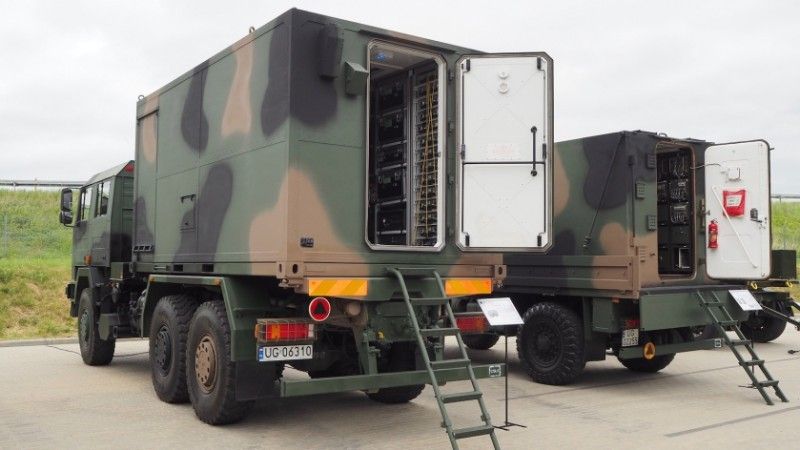ISTAR “Sowa” Procurement Launched

The Armament Inspectorate has just announced a launch of a procedure, the goal of which is to execute the procurement of an ICT system for collecting, analyzing, and distributing information within the framework of the Sowa [Owl] ISTAR acquisition. The goal is to purchase 16 mobile containerized systems based on the Jelcz 662 platform. Due to the sensitive nature of the reconnaissance-related matters, the peculiar “basic national security interest” procurement procedure has been adopted here. The participants of the competitive procurement process would be selected by the Armament Inspectorate among the entities that will submit their requests for participation until 28th August 2020, and that will also meet the formal requirements.
The Sowa procurement procedure is aimed at the acquisition of 16 containerized mobile modules designed for the collection, aggregation, analysis, and dissemination of ISTAR data (Surveillance, Target Acquisition, and Reconnaissance). Briefly speaking, the Sowa procurement concerns mobile stations for intelligence/reconnaissance analysts.
Jelcz 662 trucks with a container-support frame and two-man cabin are to be used to transport the Sowa system containers. Each of the containers is expected to house operator stations, ICT systems, power supply, and safety measures. The system is also to include technical documentation, a set of spares, group spares kits, and diagnostics/measurement kit.
Notably, Sowa has begun with a technical dialogue organized between 2014 and 2016. Back then it was planned for the agreement to be signed in 2019, with deliveries expected to happen between 2019 and 2022. The whole programme is one of the four components of the “Operational patrol reconnaissance” priority programme defined by the 2013-2022 Technical Modernization Plan, and the priority has been extended to the year 2026, in the newly revised Technical Modernization Plan signed by Mariusz Błaszczak in February 2019. The “Operational Patrol Reconnaissance” plan includes the following elements:
- ISTAR IT intelligence collection, analysis, and dissemination system (for recon, forward, SIGINT, IMINT and HUMINT purposes), also known as “Sowa” [Owl];
- Reconnaissance vehicles for the forward recon units, also known as “Żmija” [Viper];
- Light armoured reconnaissance vehicles, also known as “Kleszcz” [Tick];
- Unmanned reconnaissance vehicles (MBPR), also known as “Tarantula”;
- Automated system for collection, gathering, processing, and dissemination of intelligence received from the forward reconnaissance elements, also known as “Pająk” [Spider].
Among the five of the aforesaid programmes, only Żmija ended up in the conclusion of an agreement concerning the Concept “Wirus” 4x4 vehicles. The delivery of more than 100 vehicles is to begin this year. AMZ Kutno, meanwhile, is developing its Bóbr 3 [Beaver 3] armoured reconnaissance vehicle, within the scope of the Kleszcz programme. Tarantula unmanned systems procurement has been canceled, yet again, in 2018, due to the lack of bids. The Pająk programme, meanwhile, entered the phase beginning for the Sowa program now, back in 2018 - the bidders were to be selected back then, however, there is no information regarding any progress here.
The two latter programmes are progressing in line with Paragraph 27 of the “Decision No. 367/MON issued on 14th September 2015, regarding the rules and process of awarding orders at the MoD, bearing the basic meaning for the national security interest”. This process is adopted when there is no possibility to use a procedure of negotiation involving a single bidder or a selected group of contractors, as described in the two preceding paragraphs.
According to § 27, “In case of no possibility of applying processes mentioned in § 25 or § 26, due to the lack of possibility of defining a closed circle of contractors, the Ordering Party shall publish an order announcement at his seat and via his website”. The goal is to define a finite catalogue of contractors - in this case, no more than 3 entities that would be involved in the process pertaining to a potential procurement pursued in line with § 25 or § 26.
